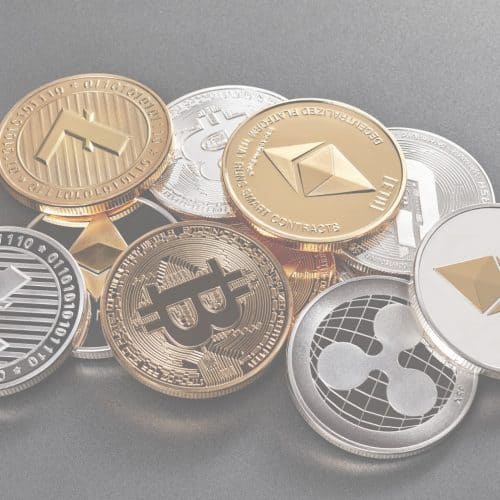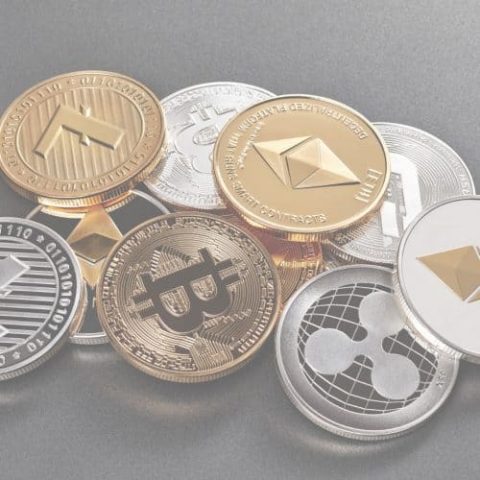
Deep Tech Thesis
5 October, 2020
Pakistan: An untapped tech economy
30 March, 2021
The DeFi Boom: use cases, current issues and investing in DeFi
3 February, 2021
There has been much hype over the Decentralised Finance (DeFi) space in the last year with DeFi projects like Uniswap reaching US$4b in market capitalisation. DeFi or Decentralised Finance are essentially projects that seek to remove intermediaries and single points of failure from traditional finance use cases or centralised financial platforms (CeFi). Current projects tackle, in varying comprehensiveness, remittance, payments, credit, savings, trading, derivatives and insurance. This article will give an overview on the key features of DeFi, use cases in remittance, stablecoins, decentralise exchanges, decentralised lending, and financial inclusion. We’ll then discuss current issues with the DeFi model and some thoughts on investing in DeFi tokens.
Key Features
The fundamental attributes of DeFi projects are 1) the absence of intermediaries and financial institutions in the financial transaction, 2) decentralised governance and 3) its fully transparent nature.
Without intermediaries, transactions are made more efficiently with the removal of centralized systems — no more human management, inaccuracies, long settlement periods, manual reconciliations, human bias, and fraudulent actors. A decentralised governance system and the fully transparent nature of projects are other key features.
Projects generally aim towards a community governance model where members across the world vote on outcomes and disputes based on their relative stakes in the network. The network relies on the “Wisdom of the Crowd” to make decisions, innovate, or even pivot. Members vote on executable code (mostly on the Ethereum smart contract), removing the need for an intermediary (i.e. an employee or a foundation member) to implement the decision. This also prevents governments from shutting it down, because each member has a copy of the blockchain to validate transactions (similar to BitTorrent). As we will discuss below, this model is still relatively new and, accordingly, there are many teething issues that are yet to be solved.
By virtue of its publicly available code, these DeFi networks are fully transparent and verifiable by other users on the network. This model relies on the community to correct bugs and errors (similar to Wikipedia) and to police bad actors.
Remittance
The first and earliest use cases of DeFi was Bitcoin, used as a means of remittance across borders, bypassing traditional intermediary banks and the long settlement periods. Typically, only the cross- border flow of funds has been decentralised (bypassing offshore clearing houses and correspondent banks), for first and last mile, centralised intermediaries are often still involved.
The original thesis for the remittance use case was clear. As the market capitalisation of Bitcoin grew, the ability to make large transactions over the network without moving the market increased. This attracted more frequent and large remittance use cases on the network which further increased the Bitcoin market capitalisation, resulting in a flywheel effect. For instance, initiating a US$5m remittance transaction in 2016 when market capitalisation was US$5b+ would have moved the market significantly, making it too costly for the transaction to be feasible. At a market capitalisation of US$600b+ today, remitting a similar amount will have a much smaller impact on the price of Bitcoin, making the transaction relatively more feasible.
Unfortunately, as the ecosystem grew, increased speculation and intra-day Bitcoin trading resulted in prohibitively high volatility of Bitcoin prices. As a result, this saw the introduction of several other coins which aimed to increase transaction speeds and lower volatility such as Ripple and Stellar. These coins started out promising but eventually suffered the same price volatility which rendered them inadequate for most remittance use cases. Projects such as Tether began offering stablecoins which claimed to be backed one-to-one with the fiat currency it is pegged to.
Stablecoins
The initial days of stablecoins had issues around auditability and trust in the coin issuer. Not long after the first wave of stablecoins, many reputable firms and governments issued their own stablecoins backed by either fiat or commodities like gold. While the reputation of these centralised stablecoins mitigated most counterparty risks, the market was still not comfortable with potential bad actors, fraudulent employees, or government intervention. They sought a new type of stablecoin, one that was truly decentralised, fully transparent and cannot be shut down by government intervention. Developers responded with two solution types; algorithmic and trust based driven stablecoins (like Basis Cash, the anonymously revived form of Basecoin) and crypto-backed stable coins (like Dai) with the latter gaining the most traction.
Decentralised Exchanges
Decentralised exchanges (commonly known as DEX) allow for peer-to-peer cryptocurrency trading without the need for depositing or withdrawing crypto assets. There is no intermediary that takes custody of funds and users have full transparency on how the DEX executes orders, the spread it takes and the true underlying liquidity within the exchange. Like other DeFi projects, decentralised holders of the underlying DEX tokens vote on governance issues with some projects also offering a portion of the trading fees to token holders (often via a staking model to avoid being classified as securities).
Proponents of DEXs often cite the following advantages over centralised exchanges:
Near zero risk of server downtime, as hosting is distributed throughout the nodes. Centralised exchanges are prone to Distributed Denial of Service (DDoS) attacks, where the central server is overwhelmed by requests, resulting in downtime.
No withdrawal or deposit limits or requirements. Centralised exchanges often have restrictions on how much you can deposit or withdraw at once.
No need for Know Your Customer (KYC) verification. Most centralised exchanges require users to go through a verification process before they can start trading.
There are, however, some drawbacks to DEXs compared to their centralised counterparts:
Lack of liquidity. Centralised exchanges typically have more liquidity, as they can aggregate orders from various sources.
Slower transaction speeds. DEXs often suffer from slower transaction speeds due to the nature of decentralisation and the consensus mechanisms involved.
Higher complexity. DEXs can be more complex to use, especially for beginners, compared to centralised exchanges which often offer intuitive interfaces.
Despite these drawbacks, the popularity of DEXs continues to grow as users value the privacy, security, and decentralisation they offer.
Decentralised Lending
Decentralised lending platforms allow users to borrow and lend cryptocurrencies without the need for intermediaries. These platforms typically operate through smart contracts on blockchain networks, removing the need for traditional banks or financial institutions.
Users can borrow cryptocurrencies by providing collateral in another cryptocurrency, effectively leveraging their existing crypto holdings to access additional funds. The use of smart contracts ensures that loans are executed automatically according to predefined terms, reducing the need for trust between borrowers and lenders.
Decentralised lending platforms offer several advantages over traditional lending systems, including:
Global accessibility: Anyone with an internet connection can participate in decentralised lending, regardless of their location or background.
Lower fees: Decentralised lending platforms often have lower fees compared to traditional banks, as they do not have the overhead costs associated with maintaining physical branches and infrastructure.
Increased transparency: Transactions on decentralised lending platforms are recorded on a public blockchain, providing transparency and accountability to all participants.
However, decentralised lending also carries risks, including smart contract vulnerabilities, collateral liquidation, and price volatility. Users should carefully evaluate these risks before participating in decentralised lending platforms.
Financial Inclusion
One of the most promising aspects of DeFi is its potential to promote financial inclusion by providing access to financial services for underserved populations. Traditional banking systems often exclude individuals who lack access to identification documents, credit history, or physical bank branches.
Decentralised finance platforms can bypass these barriers by leveraging blockchain technology to create open, permissionless financial systems. Users can access a wide range of financial services, including payments, savings, loans, and insurance, without the need for a traditional bank account.
By removing intermediaries and lowering barriers to entry, DeFi has the potential to empower billions of people around the world who are currently underserved by traditional financial institutions. However, challenges such as scalability, user experience, and regulatory compliance must be addressed to realize the full potential of DeFi for financial inclusion.
Conclusion
Decentralised finance represents a paradigm shift in the way financial services are accessed and delivered. By leveraging blockchain technology, DeFi platforms offer increased transparency, security, and accessibility compared to traditional financial systems.
While DeFi has experienced rapid growth and adoption in recent years, it still faces challenges such as scalability, regulatory compliance, and user experience. However, with continued innovation and development, DeFi has the potential to revolutionize the global financial system and promote financial inclusion on a scale never seen before.
Investors interested in DeFi should carefully evaluate the risks and opportunities associated with this emerging market. While DeFi offers the potential for significant returns, it also carries inherent risks such as smart contract vulnerabilities, price volatility, and regulatory uncertainty.
Overall, DeFi represents a transformative force in the financial industry and has the potential to democratize access to financial services, empower individuals, and reshape the global economy.

